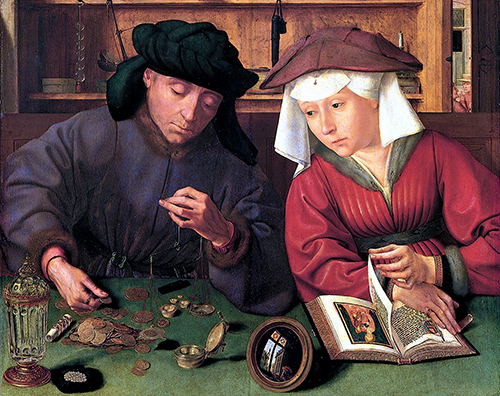skip.knox submitted a new blog post:
History for Fantasy Writers: Bank on It
by E.L. Skip Knox

Banks appear in a number of fantasy stories. George Martin’s Iron Bank is probably the best known, but banks and banking families can be found all around the fantasy landscape, especially in modern works. For writers considering including banks and bankers in their own stories, knowing something of the history can help add detail and color.
Money Changers
Europe in the High Middle Ages, say around 1100, had a bewildering variety of coinage (see my article on medieval money), a crazy cobweb of overlapping public authority, and an unreliable network of roads. Banking arose in response to the need of merchants to conduct large-scale business at a distance in that environment.
As you might guess, with so many different coins, knowing how to convert from one currency to another was a fairly technical business. That business was handled by a money changer. In Florence and other north Italian towns, the money changers set up shop at markets and near merchant establishments—any place where there was plenty of commercial traffic. The benches they sat on are called banca in Italian. That's where we get the term bank.
Money changers knew more than just how to convert currencies. They had scales and could...
Continue reading the Original Blog Post.
History for Fantasy Writers: Bank on It
by E.L. Skip Knox

Banks appear in a number of fantasy stories. George Martin’s Iron Bank is probably the best known, but banks and banking families can be found all around the fantasy landscape, especially in modern works. For writers considering including banks and bankers in their own stories, knowing something of the history can help add detail and color.
Money Changers
Europe in the High Middle Ages, say around 1100, had a bewildering variety of coinage (see my article on medieval money), a crazy cobweb of overlapping public authority, and an unreliable network of roads. Banking arose in response to the need of merchants to conduct large-scale business at a distance in that environment.
As you might guess, with so many different coins, knowing how to convert from one currency to another was a fairly technical business. That business was handled by a money changer. In Florence and other north Italian towns, the money changers set up shop at markets and near merchant establishments—any place where there was plenty of commercial traffic. The benches they sat on are called banca in Italian. That's where we get the term bank.
Money changers knew more than just how to convert currencies. They had scales and could...
Continue reading the Original Blog Post.

 Maester
Maester
 Dreamer
Dreamer Myth Weaver
Myth Weaver